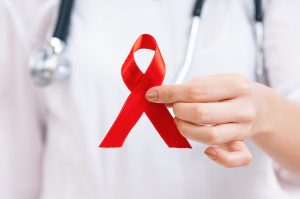There is a host of myths surrounding HIV/AIDS when HIV transmission facts are fairly straightforward. By being aware of the facts about how HIV is passed on, you can spare yourself from so many unwarranted concerns and also take an active role in debunking myths when you come across them. So, here are some of the most common myths associated with HIV/AIDS transmission that people need to stop buying into:
First, though, let’s start with the basics of how HIV is spread. The human immunodeficiency virus can only be transmitted if infected bodily fluids such as blood, vaginal or anal discharge, semen, or breast milk enter your bloodstream. This can typically occur in the following ways:
– Unprotected sexual intercourse
– Sharing drug paraphernalia
– Mother-to-child in pregnancy, during birth, or while breastfeeding
– Contaminated blood transfusions/organ donations
Myth #1 You can potentially get HIV from anyone
It is only possible to contract HIV from someone who is HIV-positive.
Myth #2 You can get HIV from physical contact
HIV is unable to live outside the body, so it is impossible to get infected with HIV by hugging, touching, or shaking hands with someone who is HIV-positive.
Myth #3 You can get infected with HIV through sweat, urine, tears, and feces
HIV is also not present in an infected individual’s sweat, urine, tears, or feces.
Myth #4 Insects can give you HIV
Insects cannot transmit HIV simply because insects draw blood–they do not inject the blood of their previous victim.
Myth #5 You can catch HIV through a cough or sneeze
HIV is not airborne, so its transmission through sneezing, coughing, or spitting is also impossible.
Myth #5 You can get HIV from the water of an infected person
Just like it cannot live in the air, HIV also cannot live in water, so you cannot contract the virus by sharing a glass or bottle of water with an infected person. You also cannot get infected with HIV in baths, hot tubs, or pools.
Myth #6 You can get infected with HIV by sharing utensils
The important rule of not sharing needles does not apply to utensils, meaning you cannot get HIV through utensils or food even if the person who is cooking is HIV-positive.
Myth #7 You can get HIV from a toilet seat
This comes back to the idea that HIV can only survive inside the human body, meaning the virus is unable to live on surfaces such as toilet seats.
Myth #8 HIV can be passed on via oral sex
Unless you have open sores or bleeding gums, the risk of HIV transmission via oral sex is very low. The risk is a bit higher if a woman who is HIV-positive and on her period is receiving oral sex, but using a dental dam can lower this risk significantly.
Myth #9 Getting tattoos or piercings can give you HIV
The risk only exists if your tattoo artist has a habit of reusing needles and does not adhere to standard sterilization techniques. However, most tattoo and piercing parlors/shops have strict rules about using brand-new equipment for every new client.
Myth #10 You can prevent HIV transmission by taking a shower right after sex
There are lots of interesting HIV preventative measures that are complete urban legends, from taking a shower right away after sex, pulling out, to using a birth control pill. The reality is that there are currently only two precautionary measures one can take to prevent HIV transmission: use a new condom for every sexual activity and go on the medication known as PrEP (pre-exposure prophylaxis).
Featured Image: Depositphotos/© DenisNata




